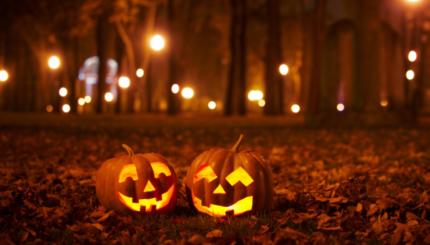I’m thinking a lot about Shabbat candle lighting nowadays, in part because I’m awaiting the birth of my first grandchild — a baby girl! — this summer. I think about teaching her to light Shabbat candles at the same age that my mother and grandmother taught me, about eighteen months old. You see above a painting of the silver candlesticks my mother inherited from her mother, and that one day I will inherit and light at my own table. I’ve already picked out the candlesticks I hope the baby will wave her small hands over — I saw them in my favorite jeweler’s shop in Jaffa a few weeks ago. Candle lighting ties our generations together in unexpected ways.
I find myself lighting Shabbat candles in all of these strange situations….
Waving my hands over the candles as though to enfold their glow into my own space, of following the blessing with my own conversation of confession, plea, and gratitude to the Almighty. Candle lighting has always provided an island of calm and normalcy, even of clearing away the cobwebs around my sense of place, whatever the circumstances I have found myself in as Shabbat approaches.
I remember the sense of historical triumph of leading family candle lighting in my garden in Santa Fe, New Mexico, within a mile of the one-time offices of the Spanish Inquisition, while inaugurating the Shabbat of my younger son’s bar mitzvah celebration. I can remember reciting the blessing over electric lights in intensive care units and hospital rooms, following my first husband, David’s, cancer surgeries. I remember the dream-like wonder of lighting candles for the first time beside the man who would shortly become my second husband, Michael. And, burned into my heart is a cellphone photo still on my fridge, of the “Shabbat set-up” that my younger son arranged every Friday evening of a six month posting to an army base in Afghanistan several years ago. There he welcomed Shabbat with a blessing over electric lights, prayed Kabbalat Shabbat, made Kiddush over mango juice, and, enjoyed a double portion of the kosher MREs I sent, and then spent a couple of hours studying Jewish texts behind the closed door of his private room….in an environment where his life might have been endangered had the local workers known of his Jewish identity. The experience of lighting the Shabbat candles quietly stabilizes us, reassures us of who we are, who we come from, and how we hope our way of life will live beyond us.
The blessing itself is simple and unexceptional among blessings. The practice of Shabbat candle lighting began pragmatically, simply to light the Shabbat table so that the family could see and enjoy their festive meal together. The kabbalists of Tsfat and their followers, however, attributed complex interactions between the human and divine spheres to our performance of the candle lighting mitzvah. One eighteenth century kabbalistic manual asserts that sending up the candle light draws down the neshama yetera, the additional Sabbath soul from the Shekhinah, into the soul of every Jew. Candle lighting, one of the three special women’s commandments, does nothing less than affect the tikkun, the healing of the ruptured Sefirot, or emanations of God. The Shabbat candles unite us with other generations, unite our families, and even unite the sundered emanations of the divine.
The paintings above, which will be featured in my forthcoming book, Kabbalat Shabbat: the Grand Unification, express the several kinds of unity that lighting the Shabbat candles effects in my life. The candlesticks themselves unite generations of women in my family. The geometric pattern is a Moorish pattern that I love, part of the world of the Sephardic Jews, and is a pictorial representation of how all space expands from and contracts back to a single point — God. The two bands of decorative text present a passage from the medieval poet Ibn Gabirol, about the light of God flowing through the cosmos, and a passage from a nineteenth century German women’s candlelighting meditation praying for divine care for her family. The starry sky behind the candlesticks, however, draws upon a Hubble Space Telescope image of the extreme deep sky back to the time of the Big Bang; we are all the stardust arisen from that ancient explosion — just as, the Kabbalists tell us, the shattering of the sacred vessel of the Divine, brought us and all the divine energy flowing through us, to light and life. In the light of the Shabbat candles, we are all one.
Learn more about Debra’s forthcoming book, Kabbalat Shabbat: The Grand Unification.
bar mitzvah
Pronounced: bar MITZ-vuh, also bar meetz-VAH, Origin: Hebrew, Jewish rite of passage for a 13-year-old boy.
Kiddush
Pronounced: KID-ush, Origin: Hebrew, literally holiness, the blessing said over wine or grape juice to sanctify Shabbat and holiday.
kosher
Pronounced: KOH-sher, Origin: Hebrew, adhering to kashrut, the traditional Jewish dietary laws.
mitzvah
Pronounced: MITZ-vuh or meetz-VAH, Origin: Hebrew, commandment, also used to mean good deed.
Sephardic
Pronounced: seh-FAR-dik, Origin: Hebrew, describing Jews descending from the Jews of Spain.
Shabbat
Pronounced: shuh-BAHT or shah-BAHT, Origin: Hebrew, the Sabbath, from sundown Friday to sundown Saturday.



